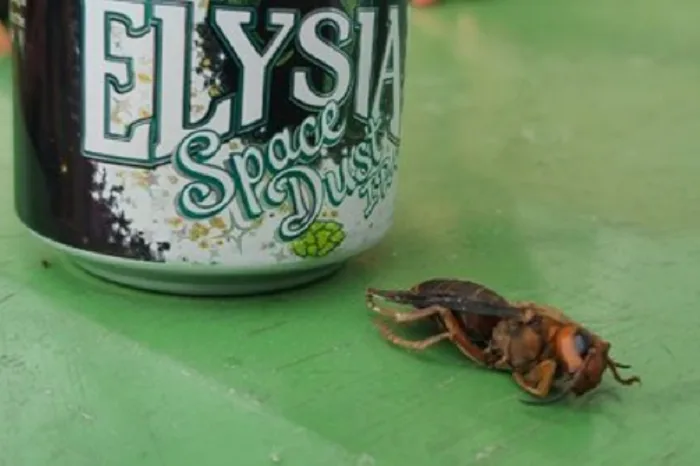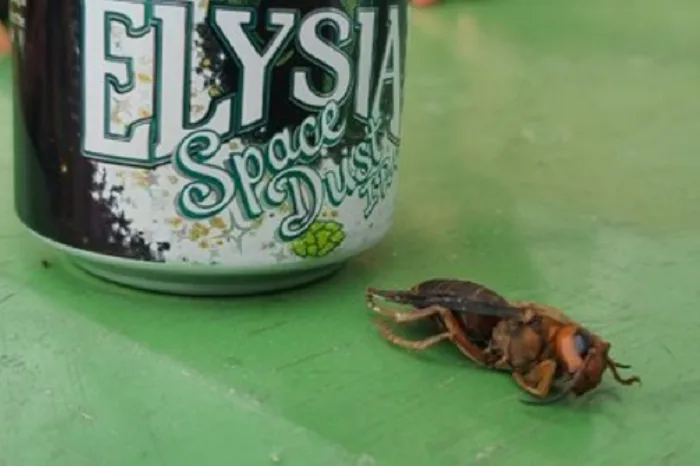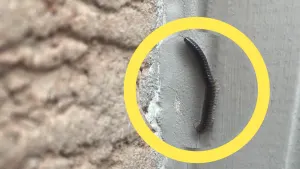
First murder hornet of 2021 found in the US in an unexpected place
It's the first time a hornet has been found so far south.
Earlier this month, a large murder hornet was found for the first time in Snohomish County, an area north of Seattle. The insect was dead and its remains were dry, suggesting it is an older specimen from last season, officials said in a statement.
It marks the first murder hornet discovery so far this year and, up until the sighting, it was not known that the hornets had migrated that far south.
Earlier this year, experts predicted a resurgence of murder hornets, prompting crews in both Canada and the U.S. to take preventative measures.
Speaking with the Associated Press (AP) back in March, Sven-Erik Spichiger of the Washington state Department of Agriculture said crews would attempt to "get as many" hornets as they can through eradication efforts.
“It’s an absolutely serious danger to our health and well-being,” Paul van Westendorp of the British Columbia Ministry of Agriculture, Food and Fisheries told AP, adding the hornets pose a threat to the honeybees we rely on to pollinate Canada's food crops.
“These are intimidating insects.”
Teams set out thousands of traps to capture murder hornet queens attempting to set up nests.
But efforts have been focused on northwestern parts of the state, and not areas near where the recent hornet was found.
Officials have deployed entomologists to survey Washington's southern communities to determine if eradication efforts need to be expanded.

A photo of the recent discovery (WSDA/Public domain)
DNA TESTING SUGGESTS SEPARATE INVASION
DNA sampling and physical characteristics of the remains found in Snohomish do not match those of the hornets discovered near the Canadian border, suggesting there could be other colonies in the state, Science Alert says.
"This new report continues to underscore how important public reporting is for all suspected invasive species, but especially Asian giant hornet," entomologist Sven Spichiger from the Washington State Department of Agriculture said in a statement.
"We'll now be setting traps in the area and encouraging citizen scientists to trap in Snohomish and King counties. None of this would have happened without an alert resident taking the time to snap a photo and submit a report."
A MAJOR THREAT
Asian giant hornets - also referred to as 'murder hornets' - have been spotted in B.C. in recent years.
While usually restricted to warmer areas, experts say they have the potential to migrate east.
They're among the largest hornets in the world, with female workers that can grow up to four centimetres in length.
In the late summer and fall, worker hornets may come together to attack the nests of other insects, particularly honeybees. They are efficient killers, able to wipe out entire colonies within a few hours.
Once a colony has been wiped out, the murder hornets turn to the immature bees left behind in their wax cells, which are used to feed their larvae.
In its native Asia, honeybees have developed a defence, quickly surrounding a hornet and vibrate their muscles, using friction to generate enough heat to overwhelm it.
But North American bees are just beginning to develop ways to scare them off, prompting scientists to step in.
The hornets also pose a risk to humans, with stingers about 4.5 mm longer than that of a honeybee.
Murder hornet venom contains a neurotoxin called mandaratoxin. A single sting isn't normally lethal, but multiple stings can kill a human.











